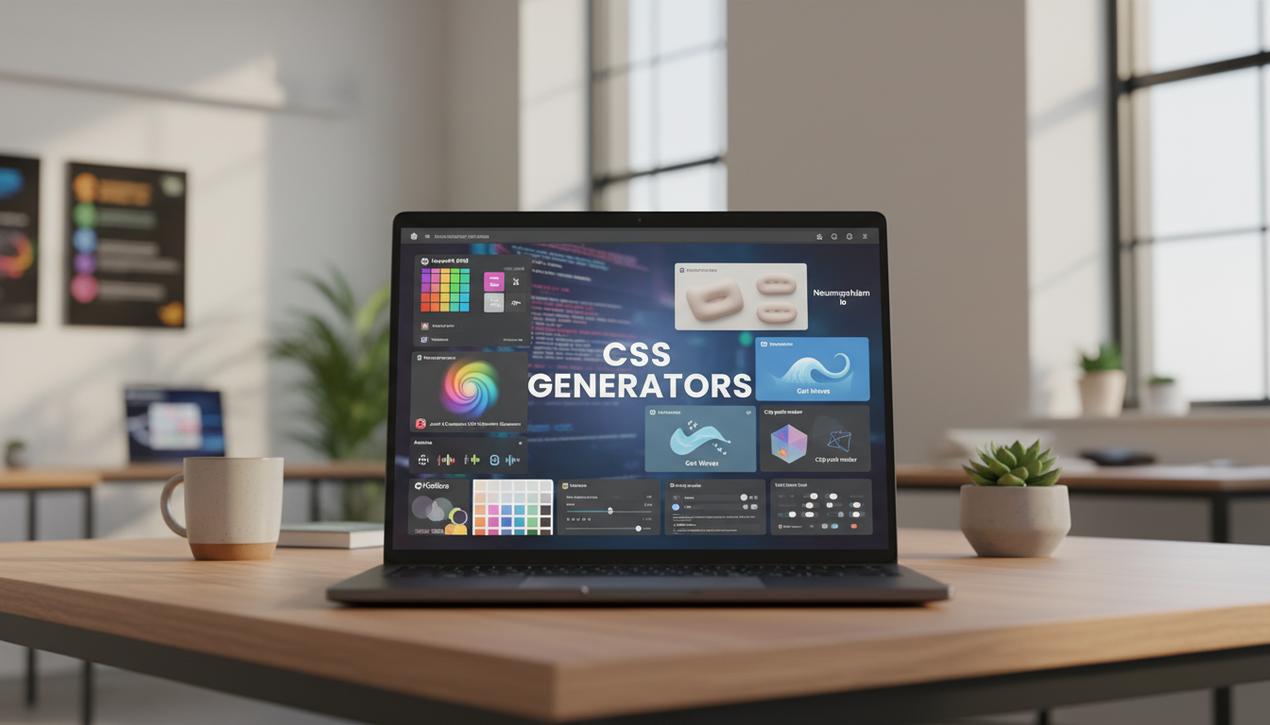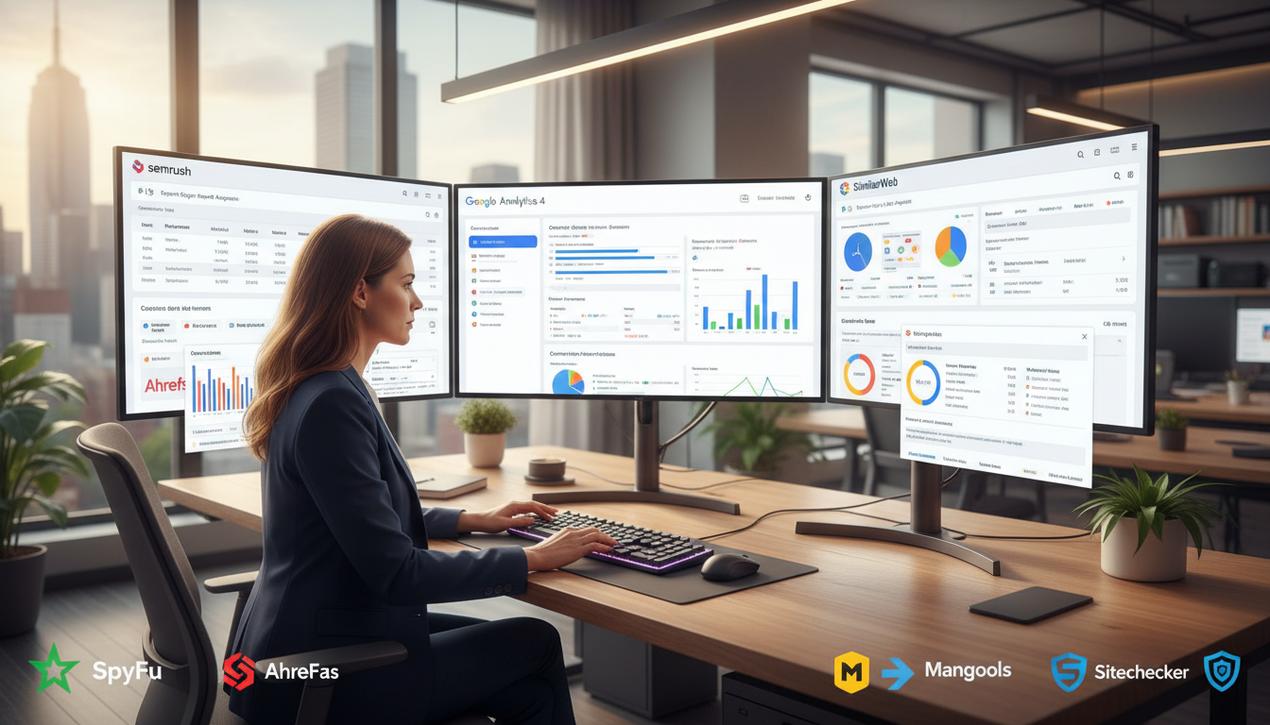12 Best CSS Generators for Rapid Web Design


In the age of agile web development, efficiency is king. While powerful, CSS can often become a time sink, even for the most experienced developers. Creating complex layouts, subtle gradients, or smooth animations requires precise syntax and extensive testing. This is where CSS generators come into play, acting as true productivity boosters. In 2025, using low-code tools or code assistants is no longer a crutch for beginners but a strategy adopted by professionals to optimize their workflow. Studies show that developers can spend up to 30% of their time on UI-related tasks. Integrating CSS generators can significantly reduce this time while ensuring clean, modern browser-compatible code that integrates perfectly into the top free code editors for developers. These tools democratize access to advanced CSS features like Grid, Flexbox, or complex animations, enabling the creation of sophisticated designs without needing to memorize every single property. This guide presents 12 of the best CSS generators, from specialized tools to comprehensive suites, to help you customize your websites faster and more effectively.
Why Integrate a CSS Generator Into Your Workflow in 2025?
Adopting a CSS code generator is not just a matter of convenience; it’s a strategic decision that impacts productivity, code quality, and creativity. As web standards evolve, these tools become indispensable allies.
Dramatic Time and Productivity Savings
The most obvious function of a generator is to automate the writing of repetitive or complex code. Instead of manually typing dozens of lines for a gradient or a box-shadow with all the vendor prefixes, you get it in a few clicks. This saved time can be reinvested in more critical aspects of the project, such as user experience or performance optimization.
Simplified Access to Modern CSS Features
CSS has evolved tremendously. Concepts like CSS Grid, Custom Properties (CSS variables), or advanced animations offer immense possibilities but come with a learning curve. Visual generators allow you to manipulate these concepts intuitively, see the results in real-time, and produce standardized code that you can then study and adapt. It’s an excellent way to learn and adopt best practices.
Error Reduction and Cross-Browser Compatibility
Writing CSS by hand can introduce syntax errors or omissions, especially concerning compatibility with older browsers. A good generator automatically includes the necessary prefixes (`-webkit-`, `-moz-`, etc.) and ensures the produced code is robust and will work across all target browsers, saving you from long debugging sessions.
Specialized CSS Generators for Targeted Needs
These tools excel at a single task. They are perfect for quickly getting a specific, well-optimized piece of code without being overwhelmed by a multitude of options.
1. Layoutit! Grid
CSS Grid is the standard for creating complex two-dimensional layouts. Layoutit! Grid is an interactive, open-source generator that makes this process incredibly simple. You can define your columns and rows, name them, and drag elements into the grid. The HTML and CSS code is generated in real-time, allowing you to instantly visualize the impact of every change.
2. Josh W. Comeau’s CSS Gradient Generator
Forget bland gradients. This tool is much more than a simple color generator; it’s a true design instrument. It allows you to create beautiful, smooth gradients using different color interpolation spaces (like LCH) for more natural transitions. The interface is educational and explains the concepts behind each choice, making it an excellent learning tool.
3. Animista
Animista is a true on-demand CSS animation library. You can choose from a vast collection of predefined animations (entrances, exits, attention-seekers), customize them by adjusting duration, timing, and direction, and then grab the clean, optimized `@keyframes` code. It’s the perfect tool for adding life to your interfaces effortlessly.
4. Neumorphism.io
Neumorphism is a design trend that uses subtle shadows to create a soft, extruded plastic effect. Neumorphism.io is a generator that lets you create this style in a few clicks. You adjust the size, radius, distance, and intensity of the shadows to get the exact desired effect on your buttons, cards, and other UI elements.
5. Get Waves
Add an organic touch to your sections with Get Waves. This SVG tool allows you to generate customizable waves to use as section dividers. You can choose the shape, complexity, and color of the waves to integrate them perfectly into your design. The generated SVG code is lightweight and easy to embed. For more intricate shapes, using the best vector design software is a great option.
6. Clip-path maker
The CSS `clip-path` property allows you to mask parts of an element to create complex shapes (polygons, circles, etc.). This visual tool lets you draw the desired shape directly on an image or a block and generates the corresponding `clip-path` code, a task that would be extremely tedious to do manually.
Tools for Color and Typography
The visual harmony of a site largely depends on the choice of colors and fonts. These generators assist you in these crucial decisions.
7. Coolors
Coolors is one of the most popular and comprehensive color palette generators. Press the spacebar to instantly generate harmonious palettes. You can lock a color you like and continue generating others that match it. The tool also offers features to check for contrast and accessibility.
8. Huemint
Going beyond simple harmony, Huemint uses artificial intelligence to generate color palettes based on their contextual use (background, text, accent). You can visualize the palette applied to website or app mockups, which helps you make more informed and functional choices.
9. Utopia Fluid Type Scale Calculator
Responsive design isn’t just about layout; it’s also about typography, which requires flawless font combinations. Utopia is an advanced tool that helps you create fluid typography scales. You define a minimum and maximum font size for given screen widths, and the tool generates the `clamp()` CSS code that allows your text to scale perfectly and linearly across all screen sizes.
All-in-One CSS Generators
These platforms bring together multiple generators under one roof, offering a complete solution for styling many aspects of your site.
10. CSSmatic
Although it’s been around for a while, CSSmatic remains a benchmark. It combines four tools in one: a gradient generator, a border-radius generator, a box-shadow generator, and a noise texture generator. Its visual interface is simple and effective for common needs.
11. CSS3 Generator
This is one of the most comprehensive multi-tools available. CSS3 Generator covers a very wide range of CSS properties: `box-shadow`, `text-shadow`, `flexbox`, `columns`, `filters`, and many more. For each property, a dedicated interface allows you to configure it visually and retrieve clean, prefixed code.
12. Web Code Tools
This toolbox for web developers offers generators for HTML and CSS, but also for microdata (Schema.org). On the CSS side, it can generate code for buttons, ribbons, tooltips, and many other common interface elements, making it an excellent favorite to keep on hand.
Using CSS generators in 2025 is a mark of pragmatism and efficiency. Far from replacing fundamental CSS knowledge, these tools complement it. They serve as a starting point, a learning tool, and an accelerator for repetitive tasks. By choosing the right tools for the right jobs, you can not only speed up your development process but also explore new creative possibilities and ensure your projects are modern, robust, and performant. The goal is not to avoid writing code, but to write better code, faster.




